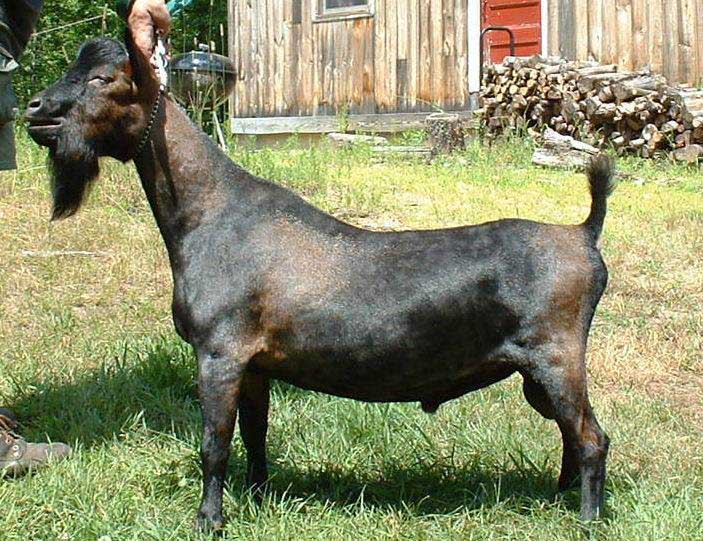When the term Nigerian Dwarf was coined it was with the intent to create a miniature version of an Alpine dairy goat. I don’t think it was meant to represent a full sized body on small legs, but to be a proportional miniature, which meant an appropriate sized head, udder and legs, complete with the “wedge” shaped body found in dairy goats. That wedge-shape, “in curving thighs, ” and strong topline were important in building the breed. But what I am seeing now is far from that.
Let me show you an example from my own herd. I will only use their call names so I don’t hurt anyone, but these are a dam daughter from the development of Hames & Axle:
Splish 
Chamisoul

Splish in the above photo is three years old, while Chamisoul is just a yearling here, but she is same doe that is on the cover of this site. Look at the strength of her brisket. Splish is nothing to sneeze at in the body capacity department, but Cham has more length of body, and as she aged, she developed her dam’s spring of rib, but over a longer back.
This is Chami’s sire:

So you can see where she got some of her traits. She has become the foundation of our herd, but how would she do in today’s show ring? The fact that she is 12 years old now and still looks sound and not much different that she did when she was 5, is what I’m breeding for – a healthy, long lived goat. Is that what is being developed now? I’m asking, because I don’t know.
The breed has grown so fast in recent years, social media is pushing color and eye color more than conformation and production. As a breeder I feel that I need to try and promote a healthier view of the breed, comment and let me know what you think. Thanks.
